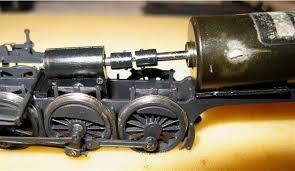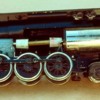One more time - this stuff is well known. You use dissimilar metals for gears such as we use - steel for the worm, and either a good engineering plastic or bronze for the worm gears. Brass turns into a pile of shavings at about the 30 minute point. Ask Sunset.
Aluminum is not a good gear material. Neither is Nylon.
Bob thanks. . Do you have a picture of one, and what the mounting method is? G
Yes, but my photos no longer work here. If you find me on another 2-rail forum, I will be happy to post. The mounting method is simple - the axle gear gets pressed on the axle with a bronze bearing on each side. The bearings fit into a cavity in the gearbox, which attaches with two screws. The worm shaft must be long enough to reduce torque wrap-up. A carefully soldered K&S tube will give the proper length.
U- joints do not work unless the gearbox is stabilized. I use Toyota # O hose, and it can handle all torque requirements at a distance of maybe 2 1/2" behind the rear worm bearing.
The toughest part of this is the re-quartering of the driver after the gear is installed.
Re-quartering is an operation requiring a jig and some experience. You will have that problem no matter who supplies the gearbox, unless the solution is designed around the existing axle gear - not a likely scenario for 100 models.










